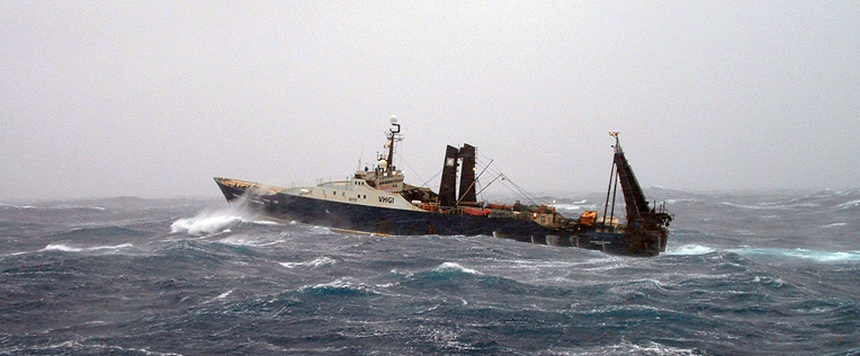Overview
Fisheries are composed of one or more parts, each of which is entitled to receive an MSC certificate. These parts or “units” are defined by their target stock(s), fishing gear type(s) and if relevant vessel type(s), and the fishing fleets or groups of vessels.
Attention
Some or all units that participated in this fishery are now covered by another assessment. Please see the Australia Heard Island and McDonald Islands toothfish & icefish for more information.
About this Fishery
Mackerel icefish are part of a group of species found exclusively in the Southern Ocean known as ‘white blooded’ fish. These species survive without the red oxygen-carrying pigment, haemoglobin, in their blood cells. This means their blood is colourless.
Mackerel icefish are distributed widely in sub-Antarctic latitudes, mainly around islands. They grow to around 44cm and are thought to live 4-5 years.
The Australia mackerel icefish fishery is located in the waters off Heard Island and McDonald Islands (HIMI), a remote group of volcanic islands in the Southern Ocean, 4,000km southwest of Perth.
The fishery is managed in line with guidance from the Convention on the Conservation of Antarctic Marine Living Resources (CCAMLR). This stipulates that over 75% of the available fish will remain uncaught, in order to maintain natural population patterns and to provide enough food for known predators.
The fishing method is demersal (bottom) and pelagic (mid-water) trawling. Trawl nets are limited to a minimum mesh size of 90mm when targeting mackerel icefish to enable juvenile fish to escape the net.
CCAMLR adopts both the 'precautionary approach' and the 'ecosystem approach' which require that all other living resources of the Southern Ocean are treated as an integrated system. It considers effects on predator, prey and related species, takes decisions on sustainable harvesting levels on the basis of sound scientific advice, and avoids decisions that have a high risk of long-term adverse effects.
The HIMI region includes one of the largest marine protected areas in the world, covering 65,000km², with an additional 11,500km² being considered for inclusion. This means that 39% of all waters shallower than 1,000m around HIMI are no-fishing zones.
Market Information
Most of the HIMI product is exported to Russia, Poland, Taiwan and China.
